Any chance you saw the 2010 movie Cop Out, with Tracy Morgan and Bruce Willis? Personally, I don’t recall it as too memorable, except that it has one of my favorite mainstream parkour references. After observing a burglar sneaking over a rooftop, Tracy’s character exclaims, “That’s called parkour. That’s a French martial art to get you around and over stuff.” Delivered in his classic deadpan, it still makes me snort out loud. And, if you disregard the criminality in the scene, it’s a moderately accurate portrayal of the goal of parkour.
However, if I was to elaborate on his description, I’d add that aside from getting around and over stuff, it’s is useful for getting across stuff with efficiency. Using your feet to walk or crawl across a narrow ledge or rail is one example – see the article about beginner rail skills for reference. Using your arms to traverse across an obstacle from one point of safety to another is a second example.
In the parkour community, when you use your upper body to move laterally across an obstacle, it is called a shimmy. As a beginner, there are two variations of the shimmy that you should be familiar with using. The first and the easiest type of arm traverse is called a support shimmy. The second arm traverse to be familiar with is called a hang shimmy.
Support Shimmy
To perform this movement, go find a horizontal handrail or a waist-high wall. Place your hands flat on the rail or wall, directly underneath your shoulders. Tighten the muscles across your abdomen, chest and upper back, and then shift your weight onto your palms so that you are supporting your weight through your arms. Your feet should be dangling over the ground at this point, with your body above the obstacle.
Next, shift your weight into one hand and lift your 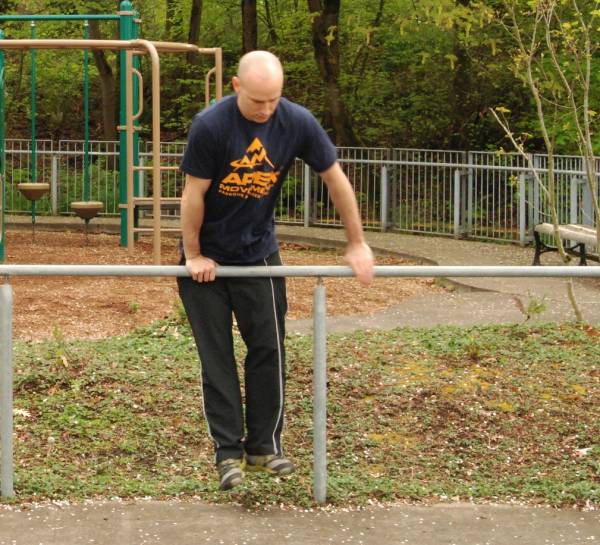 free hand to reach out to the side. Immediately, transfer your weight to the hand you just moved, and repeat the process, moving your free hand closer to the first one. As you progress your hands in this step-wise manner, you will move laterally across the obstacle.
free hand to reach out to the side. Immediately, transfer your weight to the hand you just moved, and repeat the process, moving your free hand closer to the first one. As you progress your hands in this step-wise manner, you will move laterally across the obstacle.
It’s important that you keep your elbows extended and your hands stacked beneath your shoulders as much as possible. If your arms are bent or your hands aren’t stacked beneath your 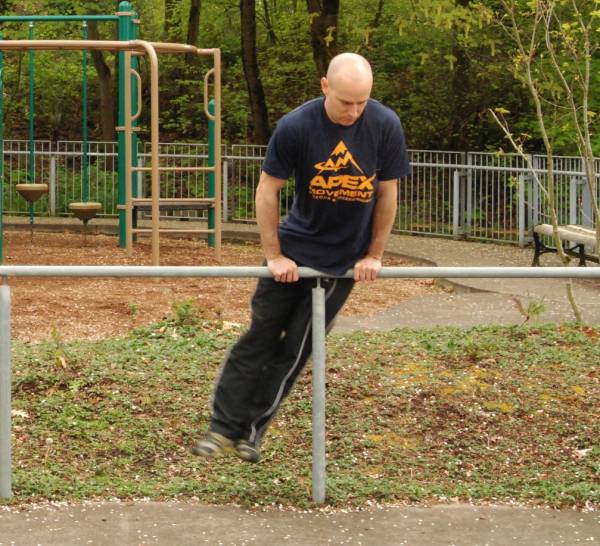 shoulders, you will fatigue quickly, limiting the distance that you can effectively traverse in the support shimmy.
shoulders, you will fatigue quickly, limiting the distance that you can effectively traverse in the support shimmy.
You’ll probably also notice that depending on what you are moving across, if your feet are able to push against the obstacle it is easier. A railing with your feet hanging free is harder than a wall where your toes make contact. Make sure to try both.
Hang Shimmy
For this movement, you will be suspended beneath the obstacle, hanging from your arms, with no weight through your legs. To practice it you’ll need to find a wall or bar that is at least five feet from the ground, and extends for ten feet or more.
Begin by placing both hands on the top of the wall, with as much surface area in contact as possible, including your thumbs if you are able. Take the weight through your hands and allow your lower body to relax and descend into a hanging position.
As with the support shimmy, you will want to keep your elbows as straight as possible. As soon as you introduce flexion in your arms, you’ll add extra bicep effort, which will make you fatigue faster. Try to keep a firm grip in your hands, but allow your arms to relax all the way until your shoulder girdle.
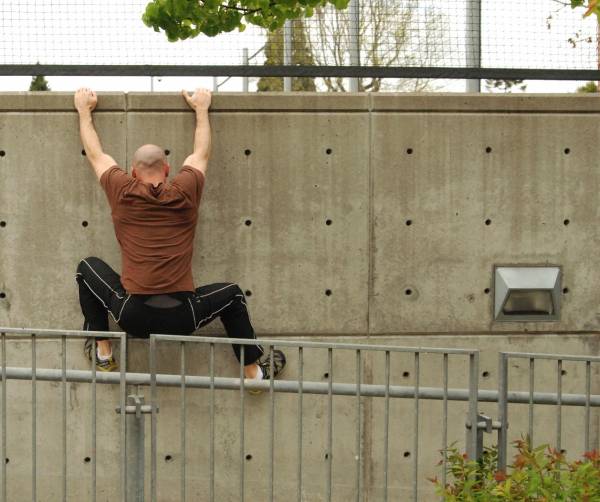
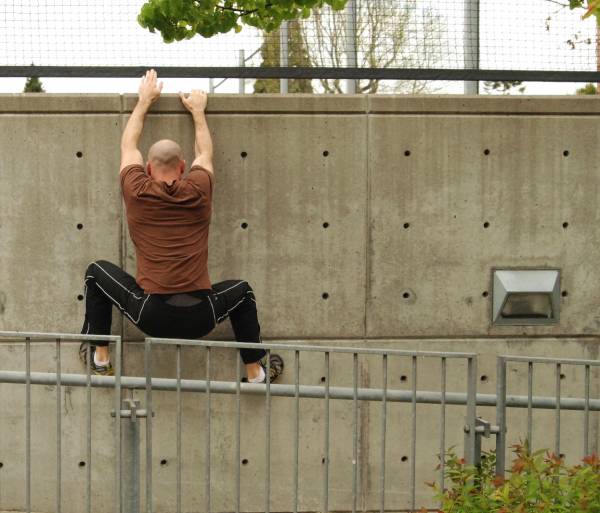
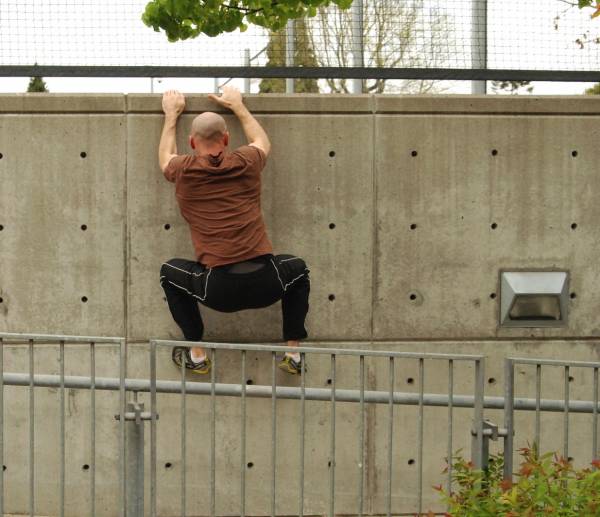
Now, to advance laterally along the obstacle, here is what you do: First, choose a direction of movement and consider that the arm opposite the direction you want to move in is your far arm and the other is your near arm. Bring your far arm to match the hand placement of your near arm, so that your thumbs are practically touching. Next, shift your weight completely into your far arm, and reach out to the side with your near arm. Take some weight through this arm, and then scuttle your lower body to the new position, beneath both shoulders.
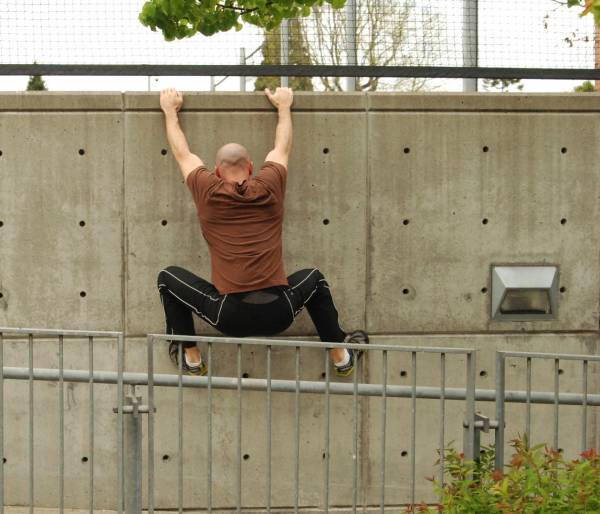
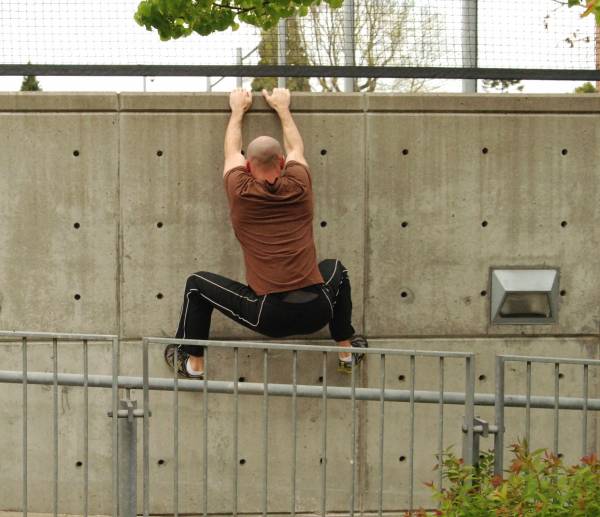
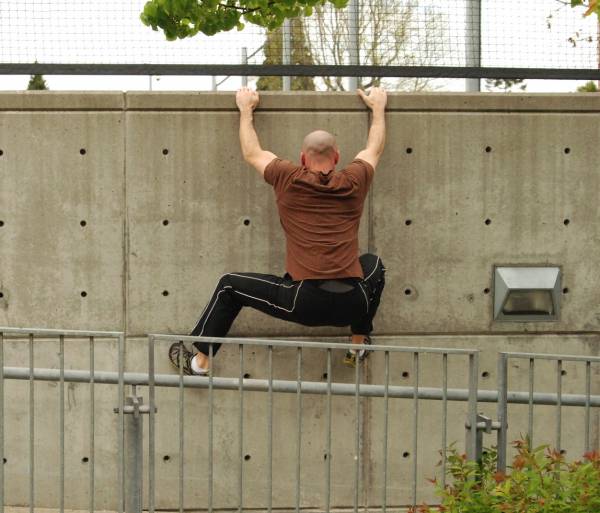
Continue the hand matching and lateral reaching until your have traversed the length of the obstacle. If you are doing it on a bar, and your legs are dangling in free space, the movement is significantly harder. If you have the option to use your legs, try to stay engaged with your foot contact and even accept some of the weight through your legs, the way a rock climber does.
Both of these shimmies are awesome ways to build functional upper body strength, and are neat variations on simple monkey bar brachiation. Do them for distance along an obstacle or also for max time, seeing how long you can stay in either the support or hang shimmy position.






